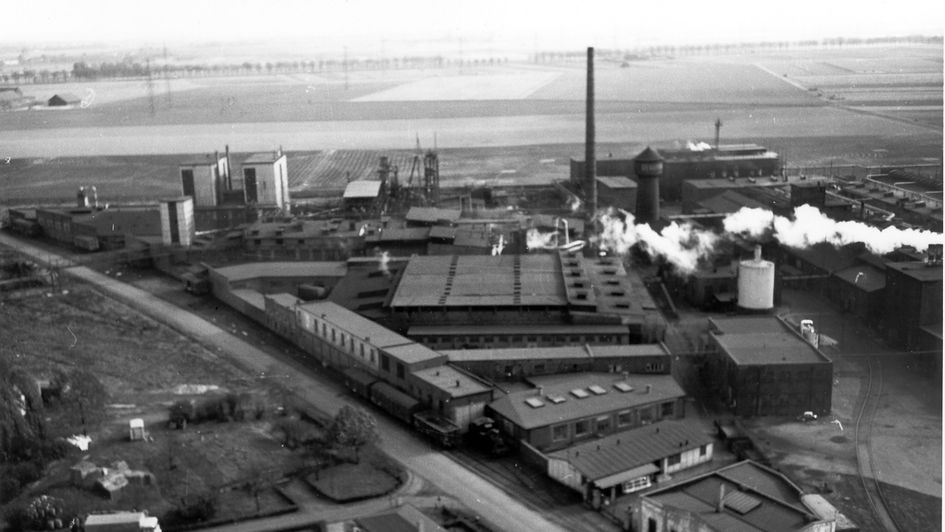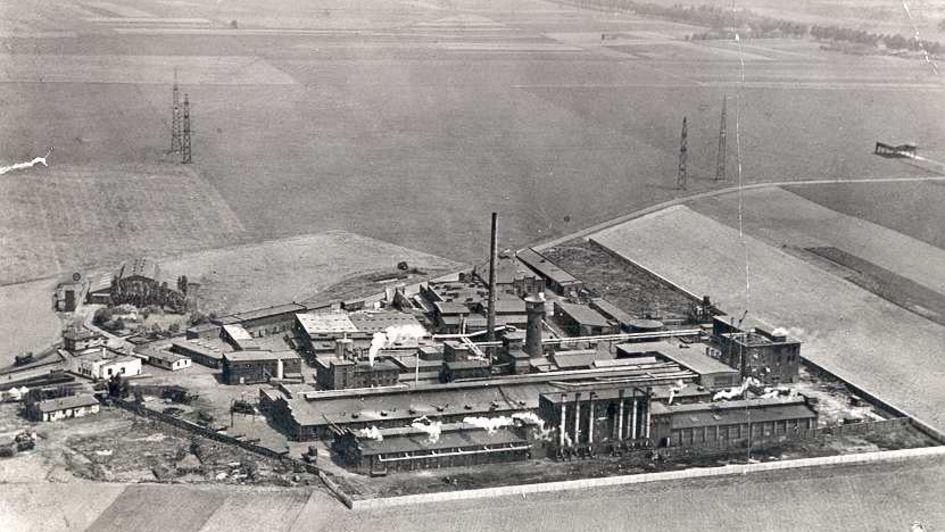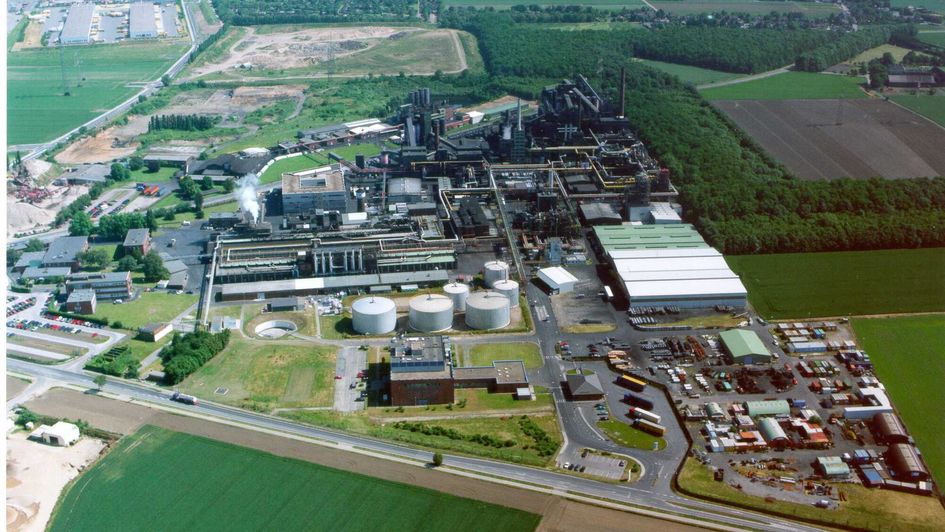The origin of Degussa’s carbon black activities
The Kalscheuren plant
The Kalscheuren plant is the origin and headquarters of Evonik’s carbon black activities. This plant, located to the south of Cologne in the Rhine region, is simultaneously both production and research site. It produces high-quality carbon blacks, an essential raw material for the manufacture of printing inks, toners, lacquers and polymers, as well as for car tires and industrial rubber goods. With a production volume of 160,000 tons of carbon blacks per year, Kalscheuren is the largest plant of its kind in Europe, and the only one to work with three different production processes: the lampblack, gas-black and furnace-black methods. Before attaining its outstanding international reputation, the plant had a long and extremely varied history.

Kalscheuren site, aerial view 1953
Degussa moves to the Rhine
The plant dates back to 1895, when the entrepreneur and manufacturer, August Wegelin, moved his carbon factory, founded in 1862, from Cologne-Sülz to Kalscheuren. After years of continuing development, the plant then experienced severe economic pressure. In order to acquire new capital, the entrepreneur took the logical step and founded the August Wegelin Aktiengesellschaft (AG). In 1932, August Wegelin AG was forced to reach a composition agreement with his creditors in order to avoid bankruptcy. Degussa, the predecessor of Evonik’s Chemicals Business Area, and at that time the Deutsche Gold- und Silber Scheideanstalt, with headquarters in Frankfurt am Main, acquired the majority share. In 1939, by means of the assignment of assets and by changing the corporate form to the Kalscheuren plant, August Wegelin AG finally became fully incorporated into Degussa AG.
The development of the site reflected not only economic but also political conditions, as was demonstrated in 1933 when the National Socialist Reichsminister for economics ordered the company to use German raw materials for the production of carbon blacks. This was a result of the self-sufficiency policy of the National Socialist regime that aimed to make Germany as independent as possible both of foreign suppliers and competitor products.
However, after the First World War, the US had already developed a very inexpensive method for the production of gas-blacks; this was extremely important for the manufacture of car tires, in particular, and represented stiff competition for German industry. The Reichsminister for economics wanted Germany to develop its own processing equipment in order to remedy the situation. In September 1934, after successful testing at the Degussa site in Frankfurt am Main, work started in Kalscheuren on the construction of a new CK3 carbon black plant. The “C” in the abbreviation CK3 stands for Continental, the tire company used for the inspection, the “K” for Harry Kloepfer, the senior developer of the method, and the “3” for the third carbon black sample that had produced the decisive development breakthrough.
During the Allied air attacks on the industrial plants along the Rhine, the Kalscheuren site suffered severe damage although production was not brought to a complete standstill. After the war, the plant was reconstructed. In the fifties and sixties, new production facilities were added, as well as the company’s first development department.

The Kalscheuren plant in 1937.
A special feature of the Kalscheuren site is its own facility for the generation of power. The plant, which was further extended in 1985, produces electrical power from the combustion of industrial waste gas. The plant then feeds this energy into the public supply network. The amount of energy produced is sufficient to meet the demands of a small town.

The Kalscheuren plant in 2001
To win the Future
In the 1990s, the Kalscheuren plant came under strong economic pressure since numerous customers from the rubber-processing industries were transferring their production to low-wage countries. In 1997, in reaction to the stiffer competition, Degussa AG introduced an ambitious modernization and restructuring program for the plant. By 2005, more than a hundred millions of Euros were ploughed into the “Kalscheuren 2005” program.
Today the Kalscheuren site is the center of carbon black research and applications technology of Evonik’s Chemicals Business Area.
